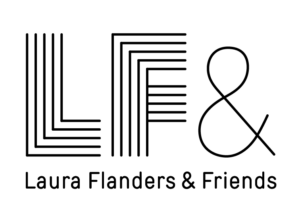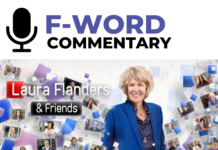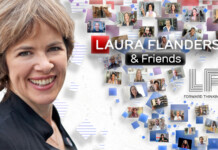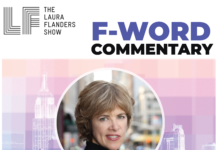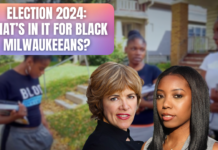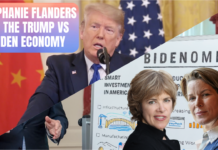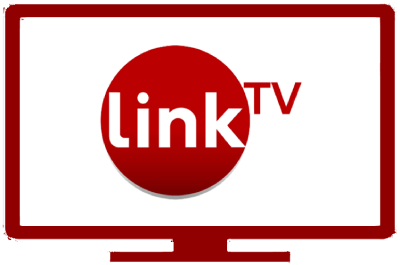Low wages, precarious jobs, shuttered Main Streets and bleak futures — do towns have a way out of poverty that doesn’t involve begging and bribing outside employers to invest? From Clevland, Ohio to Preston, England and Scotland, some local governments are experimenting with investing public resources locally in community-held businesses, and public health. They’re calling this approach Community Wealth Building, and it’s gaining traction around the world. Most recently, the US Department of Housing and Urban Development (HUD) has included money for Community Wealth Building in the Biden Administration’s National Strategic Plan. In today’s episode, we explore the spreading of Community Wealth Building and its impact on the well-being of individuals and communities so far. How are these models working where others have failed, and is now the time to take Community Wealth Building to a whole new scale?
“There’s something in the spirit of this that frankly can appeal to both liberals and conservatives. It’s really about making a place for our community, and making it a healthy place.” – Ted Howard
“If we do not fix this issue . . . we’re going to continue to see the kind of poverty, the disinvestment, the rich getting richer, the poor getting poorer, and this is just unacceptable.” – India Pierce Lee
“This is not just a small pilot project here and there. This is about rewiring the economic system for social, economic and ecological justice.” – Neil McInroy
Guests:
- Ted Howard: Co-founder & President, The Democracy Collaborative
- India Pierce Lee: Senior Vice President, Program at the Cleveland Foundation
- Neil McInroy: Advisor of Community Wealth Building, Scottish Government
Prefer to Listen?
Subscribe to our podcast to listen to this week’s episode on your favorite podcast platform.
Transcript
THE LAURA FLANDERS SHOW
COMMUNITY WEALTH BUILDING: AN ECONOMIC RESET
LAURA FLANDERS: Low wages, precarious jobs, towns with shuttered main streets and bleak futures. Is there an alternative to the sort of begging and pleading we see some cities engage in to tempt outside employers to invest in their people? Remotely owned corporations rarely stay long after the incentives run out. And the climate clock is ticking on how much slash and burn our neighborhoods can tolerate. In some places local governments are experimenting with different strategies. So here is the good news. An approach called community wealth building is gaining traction around the world. It was even picked up by the federal government’s Department of Housing and Development, or HUD, as a necessary component of the US National Strategic Plan. More on that later. We have been following this story for a while and it’s taken us from Cleveland, Ohio to Preston in Northern England. And today we’re going to get an update from even further afield. With public health, democracy, and climate at mission critical, is now lift off time for community wealth building at a whole new scale? For that conversation I welcome back to this program, Ted Howard. He is Co-founder and President of the Democracy Collaborative, and India Pierce Lee, a member of the board of trustees of the collaborative, India is also Senior Vice President at the Cleveland Foundation in Ohio, a community foundation. Also with us Neil McInroy, who we last saw when he was heading up the Center for Local Economic Strategies or CLES, in the UK. He’s now the Community Wealth Building Advisor to the Scottish government and a colleague of Ted’s. Welcome everybody. It is a pleasure to have you with us, and I’m gonna start with you Ted. Just one more time. Tell us what community wealth building is.
TED HOWARD: Well, a good way to think about it is to look at what kind of economic development do we have now in our cities, in our states. And it really is something that began about 40 years ago. And to put it in a nutshell, it is called trickle down economic development. And the idea there is if places just focus on growing the economy, the benefits will trickle down to everyone, but the reality is that doesn’t happen. And so community wealth building is really a different approach to economic development. It uses the assets the city has and leverages them, or state has, for the benefit of the residents.
LAURA FLANDERS: So India coming to you, just to fill people in a little bit on Cleveland. I mean, I was there for the Republican Convention. Let’s not talk about that experience, but I was shocked by the state of the city actually. You think of Detroit, you think of Flint. I hadn’t realized quite what shape much of Cleveland was in. Can you just describe the challenges your precious city was facing or is facing still?
INDIA PIERCE LEE: We have all the, you know, disparities, I think, but what people have finally begun to acknowledge since 2020 that a lot of us have been fighting for decades is that understanding the root causes of every issue is tied to systemic and institutional racism. I mean, we talk about wealth building, we talk about building equity, we talk about disinvestment, but then we have to look at the policies, the practices that have, you know, plagued, the red lining in our communities that have caused this, you know, decades and decades. And now we’re trying to, you know, swim our way out of.
LAURA FLANDERS: Cleveland’s model of local investment and community wealth building helped to inspire Matthew Brown, the leader of a similarly de-industrialized city across the Atlantic in Preston, England. I had a chance to talk with Brown in 2018.
MATTHEW BROWN: To be honest, I read about a lot of it on the internet. And I thought, well, is that happening in America? You know, because the perception of the American economy, I didn’t realize things like that were happening in America, linking what the public sector buys to having jobs which are democratic and in the ownership of the people who live within the community, I thought was really, really appealing. We started by going around six of our large anchor institutions. So initially we got ’em to commit to things like paying a living wage, but also shifting more of what they buy to the local economy. So that’s initially supported a lot of local businesses. So there’s 75 million pounds, which in 2016-17 was redirected towards Preston’s best suppliers. What we’re finding is that there’s more people receiving the living wage. We’re now the best in 14 district areas in Lancashire for people receiving 8,75 pounds an hour or more, but also things like the amount of jobs that are in the local economy. We’re now one of the best in Lancashire for the amount of jobs that are in the local economy compared to the amount of people who are within that local economy.
LAURA FLANDERS: These models of community wealth building are interesting, ’cause they are scalable and they’re clearly spreading. On the west coast of Scotland, a few hundred miles north of Preston, the North Ayrshire Regional Council has picked up the idea as an alternative to some of the tourist-driven, trickle down economics that’s brought them this far. Neil, you were one of the advisors on that project. Can you tell us a little bit more about what’s been happening in North Ayrshire?
NEIL MCINROY: Surely, North Ayrshire is a very typical sort of post industrial location on the west coast of Scotland and it suffered under two main problems that community wealth building addresses. Firstly, the traditional regeneration, or revitalization as you call it in the US, that payments to poor people to solve their issues. That didn’t seem to really dig right into the problems that those people were facing. And then as Ted mentioned before, the problems of economic development, this trickle down economics, let’s get the factories in, let’s get investment in and it will have a land of milk and honey. So both revitalization was failing, but also the traditional economic development model and through enlightened leadership in North Ayrshire, we’ve seen comprehensive strategies to develop community wealth building across many fronts in terms of public spending, in terms of workforce and workplace advancements, in terms of land and property and ownership of land and property, in terms of different forms of finance and how we use them effectively in the new ecosystem. And also in terms of the progressive procurement and spending of public sector resources in that locality. A suite of activities which seek to address this enduring problem of wealth and the extraction of wealth.
LAURA FLANDERS: Joe Cullinane, a member of the Scottish Labor Party recently won reelection in North Ayrshire with community wealth building as a focus of his campaign. In five and a half years under his party’s leadership, the council invested in council owned solar farms and wind turbines built on an old waste dump, a community investment fund and a large new house building program. This spring Cullinane showed Ted Howard around the building site for those new homes.
JOE CULLINANE: Okay, so this is a housing development Ted here in Irvine Harbourside. There’s 73 council houses getting built here. It’s part of the total house building program. So 1,625 council houses. Every development will have a range of sustainability measures. Solar panels will kind of be the standard ones. So as well as doing it on the new builds, we are retrofitting our existing housing stock with solar panels going to improve their energy efficiency, and reduce tenants’ energy bills, but there’ll be a range of other sustainability measures in some of the houses as well.
LAURA FLANDERS: Well, Ted coming back to you, in Scotland, as you saw the Ayrshire Growth Deal, as it’s known is on track to create thousands of new jobs over the next decade and millions of dollars in public and private funds are slated for local investment in community wealth building. Coming back to the US where cities like Cleveland and others have faced year upon year of cuts to public spending, where does the money for community wealth building for the investment come from?
TED HOWARD: Well, there are a number of sources, Laura, of resources to be invested in our community. On one hand, as we did, India and I and others in Cleveland, we worked with and persuaded what we call anchor institutions, large hospitals, universities, and so forth, to change their supply chain requirements, so that they could buy locally. So you could have hundreds of millions of dollars being spent by these large institutions, but you look in the community and nobody in the community’s getting a penny of it. So the strategy was, let’s look at all of our contracts coming up, where are we buying goods and services, laundry services, food, energy, everything else. And how can we bring those investment, those spending back to the community? After all the institutions have to buy anyway, why not buy locally where they’re rooted and can’t leave and improve the community overall in the spirit of ‘we’re all in this together’, the community and the anchor institution. More recently, cities and now the federal government are beginning to invest in community wealth building. The city of Chicago has just a few months ago, announced the first $15 million pilot investment of COVID relief funds that’s going into a community wealth building model. Other cities are similarly changing their budget. So New York City has a line item to support cooperative development, right within the city’s budget. And most recently the Department of Housing and Urban Development, the biggest funder of economic development in the United States, 68 billion dollar budget this year has built community wealth building for the first time into their new four year strategic plan. It’s very early days of course. The money hasn’t yet started flowing through the Department of Housing and Urban Development for this. But the kinds of things that we’re talking to them with is they award hundreds of millions, many hundreds of millions of dollars to grants to cities, to nonprofit organizations, to anchor institutions.
LAURA FLANDERS: India, can this model address deeply entrenched racial injustice, segregation, racism?
INDIA PIERCE LEE: We have the right people leading that one, you know, put the right policies in place. And then also, how do we leverage the funding in a way? So we’ve been at this work now about 17 years. And you know, over time we have continued to evolve, add new partners, but what has culminated from this, again, unfortunately it took all the events of 2020 to get people to really, really dig deep on this work, but then getting people to acknowledge that you have to pay people what they’re worth, right, to create the kind of wealth. You know, we have this glut now people leaving jobs and not coming back. We need to acknowledge that people need the same basic human needs. You know, it’s not about a right. It should be that’s everything for everyone, healthcare, good housing, you know, good public school systems, but really looking at how we democratize and educate our community, so that they have ownership in the community. And we’re doing, you know, some of those things on a small scale, but it’s starting to take hold, not only here, but across the country, creating land trust. You know, we have a Black Futures Fund that we created to support small, non-profit, Black led organizations doing great work in the community, touching the people where they are, but it also means that we have to change the way we do business. We have to figure out how we build to share power, how we listen to people on the ground and co-create with the individuals we’re working with to make the kind of changes that benefits them and not us telling them what they need. One of our first employees with the co-ops that actually came to us and said, you know, he was a father of five, he had just got divorced, you know, and needed somewhere to have his kids. So he said, what about helping us get housing? So we looked at various models and worked with the local nonprofit Cleveland Housing Network, now Cleveland Housing Partners, who is the largest producer of affordable housing in the state of Ohio. And when they came to us, you know, talking about after the crash in 2008, they began self-financing and said, We’re trying to do this with Evergreen, so we gave them resources to administer a housing program. So employees of the co-ops could actually buy a home and own it in five years.
LAURA FLANDERS: In what way can community wealth building, or is it already helping our transition to a more sustainable greener economy? Neil?
NEIL MCINROY: Well, clearly community wealth building, part of its strategy is to shorten our supply chains for goods and services, and that helps with our carbon footprint. So we need to repatriate elements of our economy, opposed to having these long supply chains that spin around the globe. It’s also worth saying that we are seeing in a number of places in the UK and Europe and in the States, and we’re seeing a distributed energy network, which is much more localizing the energy systems, wind and so forth, tickling Scotland, which is actually creating more immediacy. We produce the energy near where we actually are using it. So that’s very important. I think what is key about community wealth building is it nestles, if not snuggles, within a wider transformation approach to economy, that makes a transition and the key heady brew, if you like would be community wealth building combined with a green industrial strategy, which Scottish government is moving towards. So those big industrial transition questions is aligned with community wealth building strategies. Again, we’re at the footholds of this, but certainly the thinking is there, the movement’s starting to grow. We just need to move a bit faster.
LAURA FLANDERS: How do you head off the danger that the kind of localism you’re talking about, you know, increases segregation possibly, or deepens it?
TED HOWARD: What we’re talking about is not going to exacerbate that problem. You know, community wealth building at its core is something that calls to people, you know, we’re all in this together. It’s very inclusive. You know, the Evergreen cooperatives began in a very democratic city led by a democratic mayor, right? It’s interesting that one of the very first replications of our Evergreen cooperative laundry is down in the panhandle in Texas, in Amarillo, which having visited there, it’s about the reddest place I’ve ever been. There are no Democrats elected officials, but they say, you know, this just makes sense. Our hospitals, our laundry is being trucked, even out of state to be cleaned, let’s build a local facility, let’s move it toward employee ownership, hire people in the most disadvantaged neighborhoods and keep our money local. So I think there’s something in the spirit of this that frankly can appeal to both liberals and conservatives. And it’s really about making a place for our community and making it a healthy place. And as India was saying, not just economically, but really for the whole person. And I think that’s got to be a contribution to this country and where it’s going.
LAURA FLANDERS: I was very impressed, Neil, by some of what I heard about how Preston had fared during COVID. Can you talk about that?
NEIL MCINROY: Yeah, I mean, because there’s in many areas, including Preston, because there’s a high percentage of the economy is relational and cooperatives, and those other democratic enterprises. When COVID hit, there was an affinity to the place, to the people. And also there was not the huge extraction of profits that come from shareholder dividends in some of those enterprises. So in a sense they were more resilient to that particular shock. And I think there’s lessons there, you know, that the types of economy, the type of economy we’re talking about is one that is in tune more with the people, in tune with society, in tune with the problems they face. And it doesn’t make the short term shareholder profit decisions. It makes interest for the longer term. So there’s something quite powerful about that community wealth building in terms of the spirit of what an economy is. And of course the word economy comes from the Greek word, oikonomos, keeper of the household. It’s something that should be close to our hearts, close to our homes. The economy, at the end of the day, it’s a social construction, and we can construct it any way we want. And we were just talking here about making an economy that works for us. Hey, simple stuff.
LAURA FLANDERS: What do you think is at stake India, and why do you care so much about this?
INDIA PIERCE LEE: So if we do not get together and solve this, we’re going to continue to see the kind of poverty, the disinvestment, you know, the rich getting richer, the poor getting poorer, and this is just unacceptable. Everyone has the right to the same opportunities and it’s up to us to make sure that we’re out here advocating, taking the resources we have, where we set to leverage that, to really make a difference in people’s lives. At the end of the day, you know, I used to tell people, I only have this much space in the little space I live in. I want to help as many people as I can, while I can. And that means finding people like Ted, like Neil and others that are willing to stand up to fight the systems that exist, that continue to disincentivize, that, you know, really takes away the opportunity to deepen civic participation from our citizens.
LAURA FLANDERS: I often end these programs by asking our guests the following question, and I’ll ask it to you Ted first. But everybody, what do you think is the story the future will tell of this moment?
TED HOWARD: You know, I think this is a true watershed moment and there are key times in our lifetime, you know, 1933 in the United States when the New Deal came into force, in the United Kingdom, 1945, right after the war and the advent of the labor government, and the building of the National Health Service in a, I would think a kind of negative way, in 1979 and ’80, when this neoliberal doctrine came in to dominate so many economies all over the world. And, you know, a situation where three people in the United States control more wealth than the bottom 160 million of us. That’s a prescription for tearing the country apart. And I think we’ve seen some of that in recent years. So I think this could be a watershed moment where 40 years of a certain way of dealing with the economy over time is put to bed. And we build a new economy based on the democratic principle of ownership and participation. So, while the times are perilous, I’m very hopeful of where we’re going.
LAURA FLANDERS: And you India?
INDIA PIERCE LEE: I’m always the optimist. And I believe that, you know, we have enough good people that will make the kind of changes that we’re looking for. And again, you know, looking at opportunities to build on work that we’ve been doing for the last, you know, 17 years here at the foundation, you know, starting the land trust, finally, Ted, you know, things like that, that put wealth in people’s hands. And, you know, when we go out to community now to like where we’re building our new headquarters, engaging the community in a way, but paying them for their time, paying them for their advice, letting them know that they’re important and that they are part of this process. And I think the solution is just us sticking together and continuing to fight the fight.
LAURA FLANDERS: I mean, Neil, I have to say the progress has been pretty quick with community wealth building. I mean, we’re not talking centuries to gain some traction, but decades, not even very many.
NEIL MCINROY: No, it’s not glacial. We need to go faster for sure, because we’ve got a huge climate crisis, as well as the whole other series of injustices that are taking place. But we need to seize the moment. And I think from community land trust in Chicago, from municipal ownership of energy, to a whole series of different examples that fit into this community wealth building sort of framing, we need to learn those and need to sing about them. And we need to go again and harder and faster. I think that is, we need to seize this moment, but it’s not worth seizing the intangible. It’s all around us in many of our communities, we just need to get it to grow. And I think what’s exciting about what’s happening in many cities of the US, but also in Scotland, is that we’re seeing administrations starting to pick up on this. We’re seeing HUD in the US picking up on this. This could make it go a lot faster. As soon as we get that mainstream state apparatus supporting this, then we can go faster. So I think we’re at the beginning, but we’re just about to take off. That’s my hope.
LAURA FLANDERS: We just need Beyonce to record a song.
NEIL MCINROY: We do, some high profile celebrities getting behind community wealth building, would be great stuff.
LAURA FLANDERS: All right, if you’re out there anybody just contact the folks of the Democracy Collaborative, I think is the answer. Thank you all. It’s been a pleasure to catch up with each of you and all of you together. Ted Howard, India Pierce Lee and Neil McInroy, it’s really a pleasure. I enjoy it very much and I will be back in just a minute with just a few closing thoughts.
It hasn’t been all smooth sailing for community wealth building around the world. In Scotland, Joe Cullinane won reelection this spring. But his party, the Scottish Labor Party lost the majority on the council. So now they’ll be working for community wealth building from opposition, but Neil McInroy says the Scottish government and all the parties in the region are pretty persuaded of the benefits of the idea. We’ll see how it goes. In the US there’s been tremendous growth too, from that original $5.8 million put into Cleveland’s first Evergreen cooperative laundry. We’re now looking at a federal budget of $68 billion at HUD. Some of which is tagged to go into community wealth building. More than anything though, it’s not just the money. It’s the meaning that community wealth building gives to people in a place that I’ve seen make a difference. In Preston, for example, during COVID people realized they could really help one another when they were in need. They’ve gone from thinking about themselves as a place lacking in resources and investment, lacking in what they needed, to a place looking at what they actually had and have where they are and how that can make a difference. And that it seems to me is an investment worth making, shifting people’s spirits as much as shifting their economy and with community wealth building, well, perhaps you can do both at once. We’re going to continue following the story. You can find our past reports in our archives, and our uncut conversations by subscribing to our podcast. All the information is at the website. Thanks for joining me, ‘til the next time. Stay kind, stay curious, I’m Laura.
For more on this episode and other forward thinking content, subscribe to our free newsletter for updates, my commentaries and our full uncut conversations. We also have a podcast. It’s all at lauraflanders.org.
Want More Coverage?
You can find more new economy coverage here.
Accessibility
The Laura Flanders Show is committed to making our programming, website and social media as accessible as possible to everyone, including those with visual, hearing, cognitive and motor impairments. We’re constantly working towards improving the accessibility of our content to ensure we provide equal access to all. If you would like to request accessibility-related assistance, report any accessibility problems, or request any information in accessible alternative formats, please contact us.
